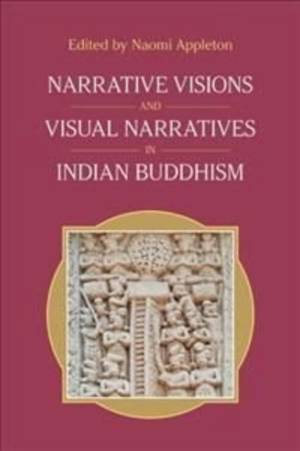
- Afhalen na 1 uur in een winkel met voorraad
- Gratis thuislevering in België vanaf € 30
- Ruim aanbod met 7 miljoen producten
- Afhalen na 1 uur in een winkel met voorraad
- Gratis thuislevering in België vanaf € 30
- Ruim aanbod met 7 miljoen producten
Zoeken
€ 56,45
+ 112 punten
Uitvoering
Omschrijving
This volume explores the interaction between text and image in Indian Buddhist contexts, including not only the complex relationship between verbal stories and visual representations at Indian sites, but also the ways in which visual imagery is used within textual narratives. The chapters are authored by a mixture of textual scholars and art historians, bringing together different disciplinary perspectives in order to seek a richer understanding of how text and art relate, and of the role of narrative imagery in different media and contexts. The book opens with an introduction that explores what narratives and visual narratives are, and why we might want to study narrative images alongside imagery-rich literary narratives. The volume is then divided into three parts. The chapters in "Part I: Visual Narratives" (Zaghet, Reddy, Zin) explore visual depictions of stories in their own right; those in "Part II: Narrative Networks" (Mace, Appleton & Clark, Strong) seek to understand the relationship between specific visual and verbal narratives; and those in "Part III: Narrative Visions" (Gummer, Fiordalis, Walters) primarily investigate how visual imagery and visualisation work in textual narratives. The volume seeks to bridge the divide that traditionally exists between textual scholars and art historians, and to challenge the contributors to think beyond the usual boundaries of our work.
Specificaties
Betrokkenen
- Auteur(s):
- Uitgeverij:
Inhoud
- Aantal bladzijden:
- 256
- Taal:
- Engels
Eigenschappen
- Productcode (EAN):
- 9781800501317
- Verschijningsdatum:
- 15/04/2022
- Uitvoering:
- Paperback
- Formaat:
- Trade paperback (VS)
- Afmetingen:
- 156 mm x 234 mm
- Gewicht:
- 576 g

Alleen bij Standaard Boekhandel
+ 112 punten op je klantenkaart van Standaard Boekhandel
Beoordelingen
We publiceren alleen reviews die voldoen aan de voorwaarden voor reviews. Bekijk onze voorwaarden voor reviews.








